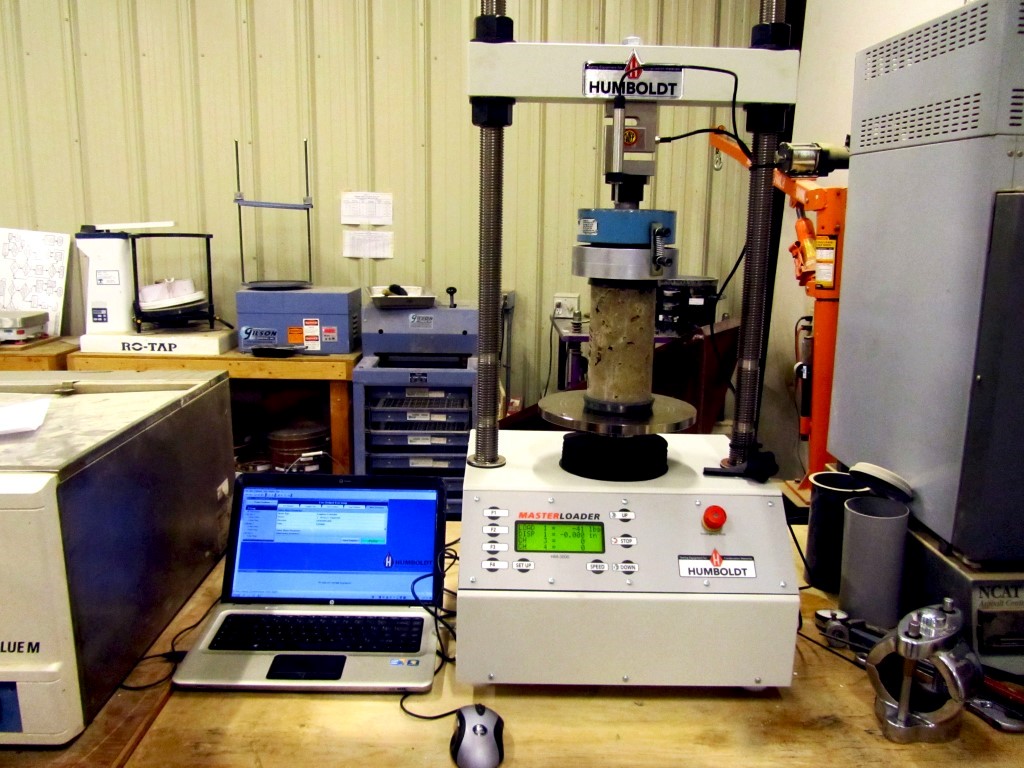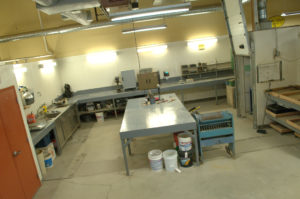Material Testing Lab Insights: Uncover the Science Behind Job Longevity
Material Testing Lab Insights: Uncover the Science Behind Job Longevity
Blog Article
Innovations in Material Testing for Enhanced Top Quality Assurance
In today's competitive and fast-paced sectors, making sure premium materials is critical to success. As innovation proceeds to advance, so does the need for much more sophisticated product testing methods. From non-destructive screening strategies to automated systems, the area of product testing has seen remarkable innovations. In this discussion, we will discover a few of the most up to date trends in product screening, including making use of advanced sensing unit technologies, the integration of information analytics, and the function of expert system. These advancements not just guarantee improved quality control but likewise hold the potential to revolutionize industries throughout the board. Let's dive right into the globe of developments in material testing and uncover how these technologies are forming the future of quality guarantee.
Non-Destructive Checking Approaches
Non-Destructive Testing Approaches play a vital role in ensuring the honesty and high quality of materials without endangering their structural honesty. These techniques are used in different industries, consisting of aerospace, building, and production, to discover and determine problems or abnormalities in materials or frameworks. By using non-destructive screening designers, professionals and strategies can review the residential or commercial properties, attributes, and efficiency of materials without causing any kind of damages.
One typically used non-destructive testing technique is ultrasonic testing (UT) UT entails the usage of high-frequency sound waves to identify problems such as splits, voids, and additions in materials.

Non-destructive screening approaches offer beneficial details regarding the quality and dependability of materials, making sure that they meet the called for requirements and criteria. By implementing these methods, markets can improve their quality control procedures, lessen the threat of failure or mishaps, and ultimately deliver safer and a lot more dependable products to consumers.

Automated Screening Systems
Automated testing systems have actually revolutionized the area of product screening, offering specific and reliable techniques for examining the quality and honesty of materials. These systems utilize sophisticated technologies and formulas to automate the screening process, reducing human error and boosting performance.
One secret advantage of automated testing systems is their capacity to perform examinations at a much faster price than hands-on screening approaches. With making use of robotics and innovative software, these systems can conduct multiple examinations concurrently, dramatically minimizing the time required for testing big batches of products.
Moreover, automated screening systems offer a higher level of precision and precision compared to manual testing. They can perform examinations with regular parameters, ensuring that the outcomes acquired are reproducible and trustworthy. By eliminating human subjectivity and variability, these systems supply an extra objective analysis of worldly quality.
Moreover, these systems are geared up with sophisticated sensors and detectors that can find also the smallest problems or inconsistencies in material residential or commercial properties. This allows early discovery of possible issues, allowing manufacturers to take corrective activities prior to the products are utilized in crucial applications.
In addition to their efficiency and accuracy, automated testing systems likewise enhance safety and security in product testing. By minimizing human participation in potentially unsafe screening procedures, these systems decrease the danger of injuries and accidents, making certain a more secure working atmosphere.
Advanced Sensing Unit Technologies
With the integration of advanced sensor technologies, material testing systems have actually achieved also higher degrees of precision and efficiency (material testing lab). Advanced sensor modern technologies play a critical duty in enhancing the quality guarantee procedure by providing a knockout post exact and real-time information during material screening. These sensors are capable of identifying and determining numerous physical residential or commercial properties such as temperature, strain, resonance, and stress, allowing for an extensive evaluation of the product's actions under different problems
One of the essential advancements in sensing unit modern technologies is the advancement of cordless sensors. These sensing units get rid of the demand for difficult wiring and make it possible for smooth data transfer, improving the overall adaptability and flexibility of the testing process. Additionally, wireless sensing units can be easily incorporated right into existing product screening systems, making them a cost-efficient option for enhancing and updating testing capabilities.

Expert System in Material Testing
Expert system has actually changed the field of product screening, bringing unmatched levels of accuracy, performance, and predictive capabilities to the quality control process. With the ability to evaluate vast quantities of information and determine patterns that might go unnoticed by human drivers, AI algorithms have greatly improved the reliability of material testing treatments.
Among the key advantages of utilizing AI in product testing is its ability to anticipate material behavior under various conditions. By training AI models on historic data, researchers can establish predictive models that can estimate the performance of products in real-world situations. This permits producers to enhance product option and layout, decreasing the need for time-consuming and expensive trial-and-error procedures.
Furthermore, AI can simplify the material and automate screening anchor process, enhancing effectiveness and decreasing human error (material testing lab). AI-powered systems can autonomously execute screening treatments, collect and analyze data, and generate detailed reports. This not only saves time but also makes certain trustworthy and constant outcomes
In addition, AI can detect and examine material problems or anomalies with high accuracy. By contrasting test results to predefined standards, AI formulas can rapidly determine deviations and alert operators to potential issues. This very early discovery of defects assists protect against damaged materials from getting in the manufacturing procedure, eventually improving item quality and consumer fulfillment.
Assimilation of Information Analytics
Data analytics plays a vital function in the assimilation of product testing processes, enabling producers to make and remove important understandings notified choices. By utilizing innovative analytic methods, manufacturers can assess big quantities of data accumulated during material screening to identify patterns, patterns, and anomalies that may influence the quality and efficiency of their items.
Combination of information analytics in material screening permits suppliers to keep an eye on and evaluate different parameters and variables throughout the screening procedure. This includes elements such as temperature, stress, strain, and other ecological problems that can affect the habits and characteristics of materials. By assessing this data, producers can get a link deeper understanding of how different variables affect the efficiency and interact of their products.
Furthermore, information analytics aids in determining potential defects or weak points in products, allowing makers to take proactive steps to address these issues prior to they cause item failings or security hazards. This positive technique can significantly improve the general quality control procedure and improve client satisfaction.
Along with determining problems, data analytics can also optimize material testing treatments by recognizing locations of enhancement and suggesting alterations in the screening procedures. By examining historic data, manufacturers can recognize patterns and trends that can help them improve their testing procedures, reduce prices, and enhance effectiveness.
Final Thought
In verdict, innovations in product screening have actually caused improved quality control in different markets. Non-destructive screening methods, automated testing systems, advanced sensing unit technologies, and the integration of data analytics have all played a substantial duty in boosting the accuracy and effectiveness of product testing processes. Furthermore, the application of man-made intelligence in material screening has actually additionally added to the advancement of even more accurate and reliable screening methods. These developments have actually caused better products and enhanced customer satisfaction.
From non-destructive testing strategies to automated systems, the field of product screening has actually seen exceptional advancements. Wireless sensors can be quickly incorporated into existing material screening systems, making them a cost-efficient service for upgrading and boosting testing abilities.
Assimilation of information analytics in material screening enables producers to keep an eye on and evaluate different specifications and variables throughout the testing procedure. Non-destructive testing methods, automated screening systems, advanced sensor innovations, and the integration of data analytics have all played a considerable duty in improving the accuracy and effectiveness of product screening procedures. Additionally, the application of man-made intelligence in material screening has actually better contributed to the advancement of even more exact and trusted testing techniques.
Report this page